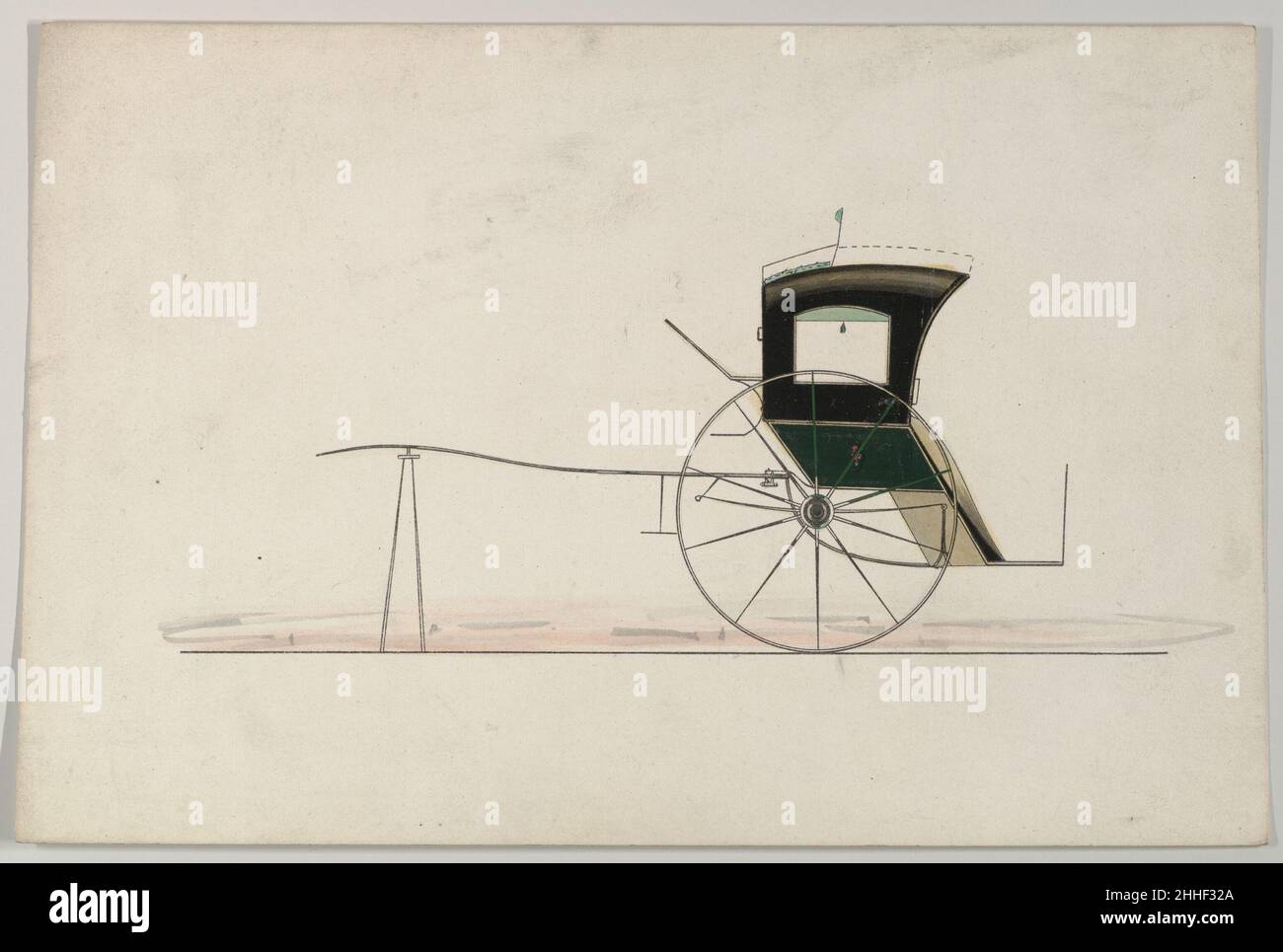Design for Reverse Body Hansom Cab (unnumbered) 1850–74 Brewster & Co. American Brewster & Company HistoryEstablished in 1810 by James Brewster (1788–1866) in New Haven, Connecticut, Brewster & Company, specialized in the manufacture of fine carriages. The founder opened a New York showroom in 1827 at 53-54 Broad Street, and the company flourished under generations of family leadership. Expansion necessitated moves around lower Manhattan, with name changes reflecting shifts of management–James Brewster & Sons operated at 25 Canal Street, James Brewster Sons at 396 Broadway, and Brewster of Bro

Image details
Contributor:
MET/BOT / Alamy Stock PhotoImage ID:
2HHF32AFile size:
18.5 MB (676.4 KB Compressed download)Releases:
Model - no | Property - noDo I need a release?Dimensions:
3098 x 2086 px | 26.2 x 17.7 cm | 10.3 x 7 inches | 300dpiDate taken:
22 January 2022More information:
This image is a public domain image, which means either that copyright has expired in the image or the copyright holder has waived their copyright. Alamy charges you a fee for access to the high resolution copy of the image.
This image could have imperfections as it’s either historical or reportage.
Design for Reverse Body Hansom Cab (unnumbered) 1850–74 Brewster & Co. American Brewster & Company HistoryEstablished in 1810 by James Brewster (1788–1866) in New Haven, Connecticut, Brewster & Company, specialized in the manufacture of fine carriages. The founder opened a New York showroom in 1827 at 53-54 Broad Street, and the company flourished under generations of family leadership. Expansion necessitated moves around lower Manhattan, with name changes reflecting shifts of management–James Brewster & Sons operated at 25 Canal Street, James Brewster Sons at 396 Broadway, and Brewster of Broome Street was based at 372 & 374 Broome Street with a repository (showroom) on 14th Street & Fifth Avenue. By 1874, Brewster & Company had 400 employees and combined warehouse and factory facilities at 47th & 48th Streets and Broadway. Brewster successfully branched out to produce their own automobiles, as well as supplying bodies for Rolls Royce at their Long Island City location. Notable clientele included Alfred Gwynne Vanderbilt, August Belmont, J.P. Morgan, John Jacob Astor, Andrew J. Cassatt (brother of artist Mary Cassatt), William Rockefeller, Henry Clay Frick and Pierre Lorillard. ?Talented draftsmen employed by the firm included Paul Steinbeck, Herman Stahmer and John Gribbon, the latter teaching at the Carriage Builders and Designers Technical School, which opened in 1880 and was housed initially at the Metropolitan Museum of Art. When the company finally dissolved in 1923, its last owner William Brewster (1866–1949) donated its archive of design and presentation drawings to the Museum where he served as benefactor and trustee.Of all American carriage manufacturers, none was as highly regarded for design, finish and quality as Brewster & Company. They won many awards for outstanding workmanship, including the Legion d’Honneur (Legion of Honor) at the 1878 Paris Exposition (3rd World’s Fair). In appreciation for this achievement the Carriage Builders’ N